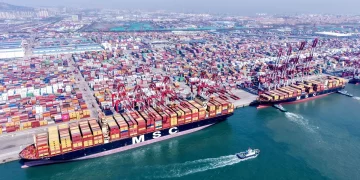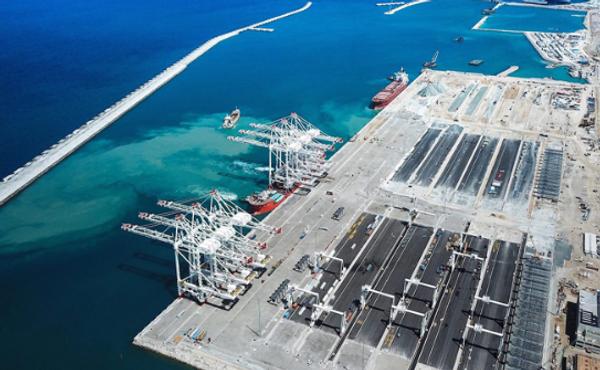Introduction
- Context and Importance of Transatlantic Trade:
- The economic ties between the European Union (EU) and the United States are fundamental to global trade. The EU and the U.S. have one of the world’s largest trading partnerships, which influences not only their economies but also global market dynamics.
- Historically, both regions have been major proponents of free trade, liberal market policies, and international cooperation. However, in recent years, protectionism has been on the rise, influencing trade policies and international relations.
- Purpose of the Article:
- This article explores whether transatlantic trade relations between the EU and the U.S. can navigate and overcome the increasing global trend of protectionism, particularly in light of recent political changes, economic disruptions (such as the COVID-19 pandemic), and a shift toward more nationalistic policies.
Section 1: The Current State of Transatlantic Trade Relations
- Historical Overview of Transatlantic Trade:
- Provide a historical perspective on the development of trade relations between the U.S. and Europe, starting with post-World War II initiatives such as the Marshall Plan, through the creation of the European Economic Community (EEC) and the North Atlantic Treaty Organization (NATO).
- Discuss key milestones such as the establishment of the Transatlantic Trade and Investment Partnership (TTIP) negotiations in 2013 and the 2018 U.S.-EU trade relations framework.
- Trade Volume and Economic Significance:
- Highlight the economic scale of the transatlantic partnership, noting figures such as the value of trade between the U.S. and EU (over $1 trillion annually) and its importance as a source of jobs, investment, and innovation.
- Examine the key sectors involved in transatlantic trade, including technology, automobiles, pharmaceuticals, and agricultural products.
Section 2: The Rise of Protectionism
- Global Surge in Protectionist Policies:
- Define protectionism, including the use of tariffs, quotas, subsidies, and non-tariff barriers to protect domestic industries.
- Analyze the global surge in protectionism in recent years, especially following the 2008 financial crisis, the rise of populist governments, and the 2016 Brexit referendum.
- Focus on the U.S. under the Trump administration, which implemented tariffs on steel, aluminum, and Chinese goods, as well as the renegotiation of NAFTA to USMCA, and its “America First” trade policy.
- Impact on Transatlantic Trade:
- Discuss the specific impact of rising protectionism on transatlantic trade, including tariffs on steel and aluminum imposed by the Trump administration, and how the EU responded with retaliatory tariffs on U.S. goods.
- Explore the internal dynamics within the EU, where different member states have varying attitudes toward free trade versus protectionism (e.g., France’s more protectionist stance compared to Germany’s pro-free trade position).
- The COVID-19 Pandemic and Trade Disruptions:
- Assess the COVID-19 pandemic’s role in amplifying protectionist tendencies. The pandemic disrupted supply chains, leading countries to reconsider their reliance on foreign goods and suppliers.
- Examine government responses to economic disruptions, including the implementation of export bans on medical supplies and the shift towards “reshoring” critical industries like pharmaceuticals.
Section 3: Key Drivers of Protectionism
- Political Factors:
- Discuss how the political landscape in both the U.S. and EU has shifted in favor of populism and nationalism. Political leaders like former U.S. President Donald Trump, UK Prime Minister Boris Johnson, and leaders in Hungary and Poland have espoused protectionist policies.
- Explore the role of voter dissatisfaction with globalization and the perceived negative impacts of free trade on domestic industries, job losses, and wage stagnation.
- Economic Factors:
- Delve into the economic consequences of globalization, which have led to inequalities both within countries and between them. The rise of inequality has given rise to political support for protectionism.
- Discuss the competitive pressures faced by domestic industries in both the U.S. and Europe, and how countries have turned to protectionist measures as a way to safeguard local industries from cheaper foreign competition.
- Technological and Geopolitical Influences:
- Examine the role of technology in shifting global trade dynamics. For example, the rise of digital platforms, e-commerce, and automation has raised questions about the ability of countries to regulate foreign technology and data flows.
- Explore the geopolitical rivalry between China and the West, and how concerns about national security (e.g., 5G technology, cybersecurity) have driven countries to adopt protectionist trade policies.

Section 4: The European Union’s Approach to Protectionism
- EU Trade Policies and Responses:
- Discuss the European Union’s stance on free trade and protectionism. The EU has traditionally advocated for a multilateral approach to trade, often through organizations like the World Trade Organization (WTO).
- Examine the EU’s response to the U.S.’s protectionist measures, including the imposition of retaliatory tariffs, and its efforts to negotiate new trade deals (e.g., with Japan, Mercosur, and other global partners).
- Explore the EU’s attempts to reform the WTO, especially in the wake of the U.S. pulling back from multilateral institutions under the Trump administration.
- Internal EU Challenges:
- Delve into internal challenges within the EU. While member states generally agree on the importance of free trade, some countries (such as France) are more protectionist than others. This can create tension within the EU when it comes to trade negotiations.
- Discuss how the EU deals with domestic calls for protectionism, particularly from industries in distress (e.g., agriculture, manufacturing), while maintaining its commitment to free trade agreements.
Section 5: The U.S. Response to Protectionism and Transatlantic Trade
- U.S. Trade Policies and Shifts:
- Discuss the shift in U.S. trade policy under the Biden administration, which has taken a somewhat more cooperative approach to Europe while still maintaining a focus on American economic interests.
- Explore Biden’s attempts to rebuild alliances with the EU and resolve tariff disputes, while navigating internal pressures to protect American jobs and industries.
- Biden Administration’s Trade Strategy:
- Examine Biden’s efforts to re-engage in multilateral trade agreements, rejoin international organizations like the Paris Agreement, and renegotiate or pause certain tariffs.
- Discuss the importance of restoring transatlantic cooperation in areas like technology, digital trade, and climate change.
- Regional Trade Dynamics:
- Investigate how the U.S. prioritizes its relationship with Europe amid rising protectionism globally, considering its trade war with China and the shifting dynamics of global trade power.
Section 6: Prospects for Overcoming Protectionism
- Multilateralism and Trade Negotiations:
- Examine the role of multilateral institutions such as the WTO, and the importance of collective global cooperation in overcoming protectionist tendencies. The potential for EU-U.S. leadership in reforming international trade rules to reflect 21st-century challenges.
- Highlight ongoing EU-U.S. trade negotiations, such as the EU-U.S. Trade and Technology Council (TTC), which aims to address tech issues, data flows, regulatory cooperation, and global standards for emerging technologies.
- The Role of Trade Agreements:
- Discuss how new trade agreements or updates to existing agreements (such as TTIP, the USMCA, and trade deals with the UK) could help both regions overcome rising protectionism by lowering trade barriers, setting common standards, and encouraging investment flows.
- Evaluate how the EU and U.S. can deepen economic cooperation in key sectors like green energy, digital trade, and manufacturing, promoting growth while addressing protectionist pressures.
- Global Cooperation vs. Nationalism:
- Delve into the future balance between national interests and global cooperation. Can transatlantic trade relations thrive despite the rise of protectionism, or is the future of global trade fragmented?
- The importance of building resilience in global supply chains, encouraging innovation, and addressing socio-economic disparities to mitigate the rise of protectionist sentiments.
Conclusion
- Summary of Key Points:
- Recap the key factors driving protectionism, the state of transatlantic trade relations, and the prospects for overcoming these challenges.
- Outlook for the Future:
- Offer insights into the future of EU-U.S. trade relations. While protectionism remains a significant threat, there are opportunities for both regions to strengthen their economic ties through strategic cooperation, updated trade agreements, and a shared commitment to multilateralism.
- Final Thoughts:
- Emphasize the importance of global cooperation and the role of major economic powers in shaping the future of international trade. The ability of the U.S. and EU to navigate rising protectionism will have profound implications not only for their economies but also for global trade stability.



































